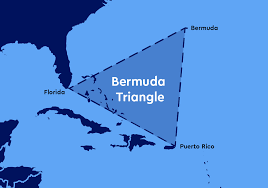Mid-Ocean Ridge Example: Understanding the Earth’s Underwater Mountain Chains

The Earth’s surface is a dynamic and ever-changing system, shaped by various geological processes operating over millions of years. Among the most fascinating and monumental features of our planet’s geology are mid-ocean ridges. These vast underwater mountain chains span thousands of kilometers across the ocean floors and play a crucial role in plate tectonics, seafloor spreading, and the formation of new oceanic crust. In this blog, we will explore what mid-ocean ridges are, how they form, and focus on a prominent example — the Mid-Atlantic Ridge.
What is a Mid-Ocean Ridge?
A mid-ocean ridge is a continuous mountain range located on the floor of the ocean, formed by tectonic plates moving apart. This underwater mountain system is created at divergent plate boundaries, where two tectonic plates are pulling away from each other. As the plates separate, magma from the mantle rises to fill the gap, cools down, and solidifies to form new oceanic crust. Over time, this process results in a long, mountainous ridge that can span an entire ocean basin.
These ridges are not only geological marvels but are also essential in the global recycling process of Earth’s lithosphere. The continuous creation of new crust at mid-ocean ridges is balanced by the destruction of old crust at subduction zones, where oceanic plates sink beneath continental or other oceanic plates.
Key Characteristics of Mid-Ocean Ridges
-
Tectonic Activity: Mid-ocean ridges are associated with high tectonic activity, including frequent shallow earthquakes and volcanic eruptions.
-
Hydrothermal Vents: These ridges are home to hydrothermal vents, where heated water rich in minerals escapes through cracks in the ocean floor, supporting unique deep-sea ecosystems.
-
Symmetrical Age Pattern: The ocean floor on either side of a ridge is symmetrically aged — the closer to the ridge, the younger the crust.
-
Axial Rift Valley: Many mid-ocean ridges have a central valley known as a rift valley, which marks the location of the plate boundary and magma upwelling.
Mid-Atlantic Ridge: A Prime Example
One of the most well-known and extensively studied mid-ocean ridges is the Mid-Atlantic Ridge (MAR). Stretching over 16,000 kilometers (10,000 miles), it runs roughly north to south through the center of the Atlantic Ocean, separating the Eurasian Plate and North American Plate in the north and the African Plate and South American Plate in the south.
Geographical Location
The Mid-Atlantic Ridge begins near the Arctic Ocean, extends through the Atlantic, and ends at the southern tip near the Bouvet Island in the South Atlantic Ocean. This massive underwater mountain chain surfaces at a few places above sea level, most notably Iceland.
Formation and Geological Importance
The MAR formed due to the divergent movement of tectonic plates in the Atlantic Ocean. As these plates drift apart, magma rises from the mantle to fill the gap, creating new seafloor. Over millions of years, this seafloor spreading has gradually widened the Atlantic Ocean.
The Mid-Atlantic Ridge serves as a boundary between major tectonic plates, meaning that it is a hotspot for volcanic eruptions, earthquakes, and hydrothermal activity. The interaction of plate tectonics along this ridge provides valuable data for geologists and oceanographers studying the Earth’s interior and the dynamics of plate movement.
Iceland: The Mid-Atlantic Ridge on Land
Iceland is perhaps the most famous place where the Mid-Atlantic Ridge appears above sea level. The island sits directly atop the ridge, with parts of it belonging to the North American Plate and others to the Eurasian Plate. The divergent motion of these plates is responsible for the island’s high level of geothermal activity, including geysers, hot springs, and active volcanoes like Eyjafjallajökull and Hekla.
One of the most visually striking features in Iceland is the Þingvellir National Park, where visitors can literally walk between the two tectonic plates in a rift valley formed by the Mid-Atlantic Ridge. This makes Iceland an incredible natural laboratory for the study of plate tectonics.
Ecological and Biological Significance
Mid-ocean ridges, including the MAR, are also rich in biological diversity, especially around hydrothermal vent systems. These vents release superheated water laden with minerals, creating a unique environment where life thrives without sunlight. Chemosynthetic bacteria form the base of the food chain, supporting a variety of organisms like giant tube worms, clams, and crabs.
These ecosystems are isolated, extreme, and have even inspired scientists to consider how life might exist on other planets or moons, such as Europa or Enceladus, where similar underwater volcanic activity might be present.
Scientific Exploration and Discoveries
Since the 20th century, mid-ocean ridges have been the focus of intense scientific study. The discovery of symmetrical magnetic stripes on either side of the MAR during oceanographic expeditions provided strong evidence for the theory of seafloor spreading, which later helped to solidify the modern understanding of plate tectonics.
Submersibles like Alvin, and remotely operated vehicles (ROVs), have allowed scientists to explore mid-ocean ridges and hydrothermal vents up close. These explorations have yielded not only geological insights but also discoveries of new life forms and ecosystems that challenge our understanding of biology.
Other Notable Mid-Ocean Ridges
While the Mid-Atlantic Ridge is the most iconic, it is not the only example. Other major mid-ocean ridges include:
-
East Pacific Rise: Located along the eastern Pacific Ocean, it is one of the fastest spreading ridges.
-
Indian Ocean Ridge: A complex system that includes the Central Indian Ridge and Southeast Indian Ridge.
-
Southwest Indian Ridge: A slow-spreading ridge between Africa and Antarctica.
Each of these has unique characteristics based on their spreading rates, tectonic interactions, and associated geological features.
Conclusion
Mid-ocean ridges are among the most important and dynamic geological features on Earth. They are sites of continuous crust formation, plate movement, and vibrant ecosystems. The Mid-Atlantic Ridge stands out as a textbook example of how these underwater mountain ranges shape our planet. From influencing the ocean floor’s structure to hosting unique forms of life and guiding our understanding of plate tectonics, mid-ocean ridges are truly one of nature’s most extraordinary creations.
As technology advances and exploration deepens, there is still much to learn about these undersea giants. But one thing remains certain — mid-ocean ridges are not just the backbone of the ocean floor; they are vital clues to the Earth’s past and keys to its geological future.







Leave a Comment